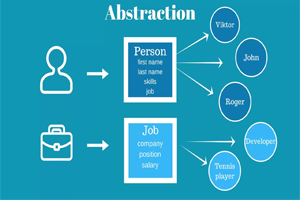How to Choose the Best Laptop- Muhammad Asad
Published: 13 Oct 2023
Introduction:
Climate change has likely led to the decline of some of Scotland’s mountain plants, according to new research. Scientists said many of the species relied on snow cover remaining high on hills until late spring and even summer to ensure a moist environment. They also said plants that thrived on lower ground in warmer conditions were spreading to mountain habitats. Species found to be in decline include snow pearl worth, alpine lady-fern and alpine speedwell. The research by the Botanical Society of Britain and Ireland (BSBI) has taken 20 years to complete and has been published in the new Plant Atlas.
Data used to produce the report included more than three million plant records of 2,555 species collected by hundreds of botanists across Scotland. Climate change, habitat loss and the spread of non-native species were found to key threats to the health of British and Irish native plants. BSBI said devastating losses of species in Scotland were among the findings. Almost the entire British population of snow pearl worth is found on Ben Lawyers, but half of the Perth shine mountain’s known colonies have disappeared over the last 40 years.

Ideas to Choose best laptop:
- Determine Your Purpose
The first and most important step in choosing the best laptop is defining your purpose. Consider how you plan to use the laptop. Are you a student needing a portable device for note-taking and research? Are you a graphic designer or video editor requiring high-performance specifications? Or are you a casual user who needs a laptop for everyday tasks such as browsing, streaming, and word processing? Identifying your purpose will narrow down your options and make the selection process much easier.
2. Operating System
The choice of operating system (OS) plays a significant role in selecting the best laptop. There are three primary options: Windows, macOS, and Linux. Each has its strengths and weaknesses, so consider your familiarity with the OS and the software you’ll be using.
- Windows: Windows laptops offer compatibility with a wide range of software and hardware, making them versatile and user-friendly. They are the go-to choice for most users, especially for gaming and productivity tasks.
- macOS: Apple’s macOS is known for its sleek design, stability, and optimization for creative tasks. If you’re into graphic design, video editing, or music production, a MacBook may be the best choice for you.
- Linux: Linux is an open-source OS known for its security and customization options. It’s ideal for tech-savvy users and developers who prefer a high degree of control over their system.
3.Size and Portability
Laptop sizes typically range from 11 inches to 17 inches, with various form factors in between. The size you choose should align with your intended use and portability requirements. If you need a laptop for travel or mobility, a smaller and lighter model might be more suitable. However, if you’re a content creator or need a larger screen for multitasking, a 15-inch or 17-inch laptop may be preferable.
4. Performance Specifications
The performance of your laptop is determined by several key components:
- Processor (CPU): The CPU is the brain of your laptop. Look for Intel Core or AMD Ryzen processors with multiple cores and threads for better multitasking and overall performance. High-end CPUs are essential for tasks like gaming, video editing, and 3D rendering.
- RAM: Random Access Memory (RAM) impacts the laptop’s multitasking capabilities. Aim for at least 8GB of RAM for general use, but consider 16GB or more for resource-intensive tasks.
- Storage: Choose between traditional Hard Disk Drives (HDD) or Solid-State Drives (SSD). SSDs are faster, more reliable, and significantly improve the overall speed and responsiveness of your laptop. Opt for a minimum of 256GB SSD storage, or go for 512GB or 1TB if you need more space.
- Graphics Card (GPU): If you’re a gamer or a creative professional, a dedicated GPU is essential. NVIDIA and AMD offer a range of GPUs, with higher-tier models providing better performance.
5. Battery Life
For those who are always on the go, battery life is a critical factor. Look for laptops with long-lasting batteries, ideally 8 hours or more on a single charge. Keep in mind that battery life can vary based on usage, so consider real-world scenarios that match your needs.
6. Display Quality
The quality of the laptop’s display is vital, especially if you’ll be working on creative projects or watching movies. Consider the following aspects:
- Resolution: Higher resolution displays (Full HD, 4K) provide sharper images and better detail.
- Panel Type: IPS panels offer better color accuracy and wider viewing angles compared to TN panels.
- Refresh Rate: Gamers should opt for laptops with high refresh rates (e.g., 120Hz or 144Hz) for smoother gameplay.
- Color Accuracy: If you’re into graphic design or video editing, a laptop with good color accuracy (measured by sRGB or Adobe RGB coverage) is essential
7. Connectivity Options
Check the available ports and connectivity options to ensure they meet your needs. Common ports include USB-A, USB-C, HDMI, and an audio jack. Additionally, look for features like Wi-Fi 6 and Bluetooth 5.0 for faster wireless connectivity.
8. Build Quality and Durability
Consider the build quality and durability of the laptop. A sturdy chassis and robust hinges are essential for longevity. Look for laptops that pass durability tests and have positive reviews regarding their build quality.
9. Keyboard and Touchpad
A comfortable keyboard and responsive touchpad are essential for a pleasant user experience. If possible, try out the keyboard and touchpad in person to ensure they meet your preferences.
10. Budget
Finally, establish a budget for your new laptop. While it’s tempting to opt for high-end models, it’s important to find a balance between performance and affordability. Consider the features that are most important to you and find a laptop that fits within your budget.
Conclusion:
Choosing the best laptop is a significant decision, and it requires careful consideration of your specific needs and preferences. By determining your purpose, selecting the right operating system, assessing performance specifications, and considering factors like size, battery life, display quality, connectivity, build quality, and budget, you can confidently make an informed choice. Remember that the best laptop for one person may not be the best for another, so tailor your decision to your unique requirements to ensure you get a device that enhances your productivity and enjoyment.

- Be Respectful
- Stay Relevant
- Stay Positive
- True Feedback
- Encourage Discussion
- Avoid Spamming
- No Fake News
- Don't Copy-Paste
- No Personal Attacks

- Be Respectful
- Stay Relevant
- Stay Positive
- True Feedback
- Encourage Discussion
- Avoid Spamming
- No Fake News
- Don't Copy-Paste
- No Personal Attacks





